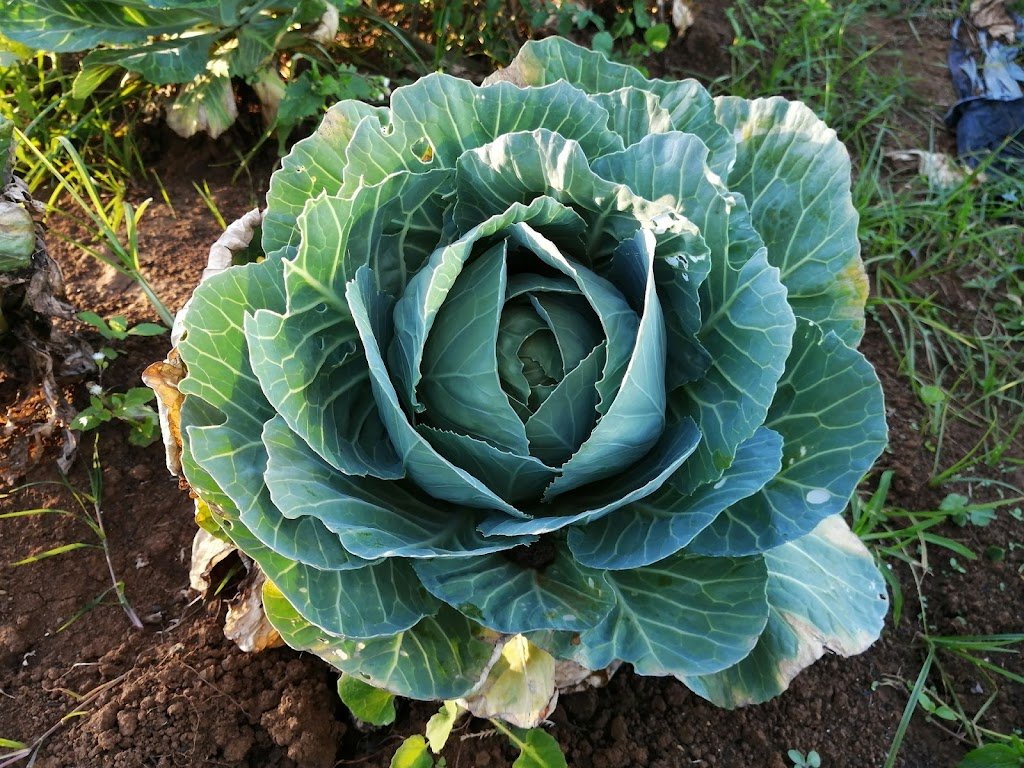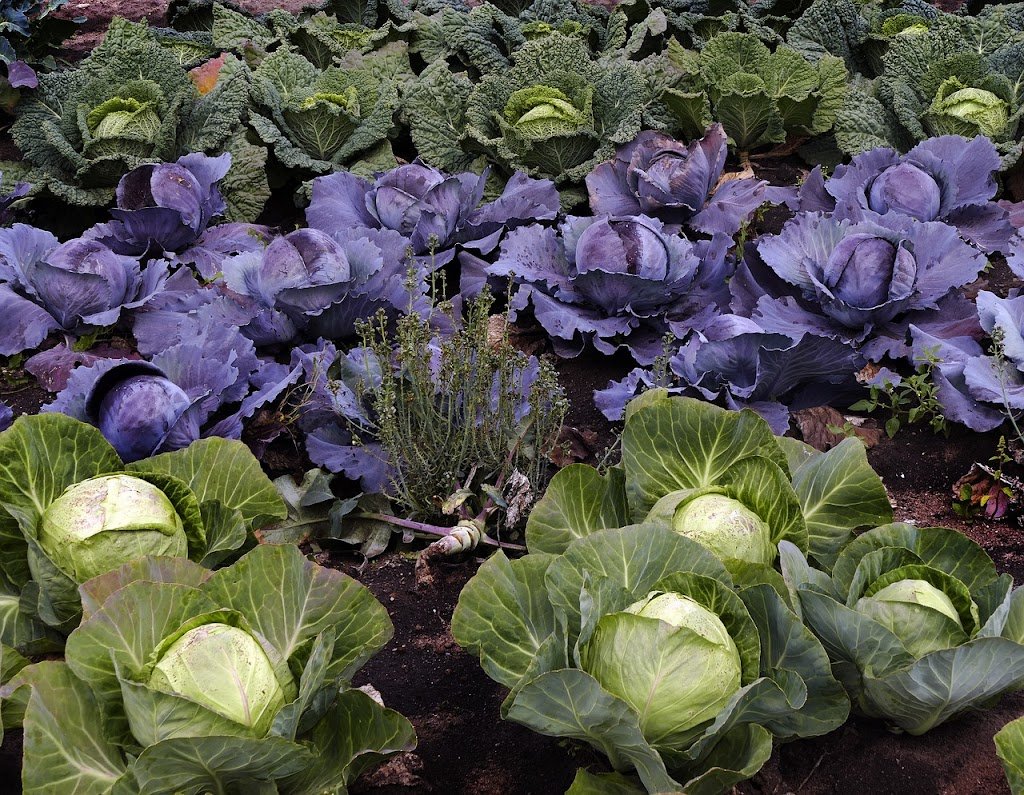The Best Fluffy Pancakes recipe you will fall in love with. Full of tips and tricks to help you make the best pancakes.
Growing Cabbage: Complete Guide to Planting, Care, and Harvesting

Table of Contents
Growing cabbage is a satisfying journey that pays off in nutritious, homegrown results. Cabbage is a hardy, cool-season crop that grows well in many climates, especially if you plant at the right time and give it the conditions it needs. With tight heads, long storage life, and tons of kitchen uses, it’s no surprise gardeners keep growing cabbage season after season.
Whether you’re planting straight into the soil or using containers on a balcony, knowing when to plant, how to care for your cabbage, and how to avoid common pests makes all the difference. Choosing the right variety, keeping the soil rich, and staying ahead of weather shifts can lead to bigger, healthier heads and a more dependable harvest.
| Common Name | Cabbage |
|---|---|
| Scientific Name | Brassica oleracea var. capitata |
| Family | Brassicaceae |
| Plant Type | Leafy vegetable |
| Planting Season | Early spring or late summer |
| Growth Time | 80-180 days, depending on variety |
| Preferred Climate | Cool season; ideal temperatures between 60-65°F |
| Soil Requirements | Well-draining, rich in organic matter, pH 6.0-7.5 |
| Companion Plants | Beets, onions, potatoes; avoid strawberries, tomatoes |
| Frost Tolerance | High; withstands light frost |
| Harvest Time | When heads are firm, around 80-180 days |
| Edible Parts | Leaves |
Types of Cabbage You Can Grow

When growing cabbage, the type you choose affects flavor, texture, and when you should plant. Common types include:
Green Cabbage – The most popular variety. Known for its tight, crisp leaves. Great for coleslaw, cabbage rolls, and soups.
Red Cabbage – Slightly tougher and spicier than green. Best for salads, braises, and pickling. Keeps its color when cooked lightly.
Savoy Cabbage – Wrinkled leaves, tender texture, and mild, sweet flavor. It’s less dense, perfect for steaming or raw dishes.
Napa Cabbage – Sometimes called Chinese cabbage, it has softer leaves and a milder taste. Popular in kimchi and stir-fries.
Pointed or Conehead Cabbage – Grows with a pointed shape and soft leaves. Matures earlier and tastes sweet and tender.
Best Conditions for Growing Cabbage
Cabbage thrives in full sun and cool temperatures. Avoid planting in hot summer months, especially if temperatures consistently go above 80°F. High heat causes heads to split or plants to bolt before maturing.
Ideal soil is rich, well-draining, and slightly acidic to neutral (pH 6.0 to 7.5). Work in compost or well-rotted manure before planting. Heavy feeders like cabbage benefit from deeply fertile soil.
Each plant needs plenty of space—tight spacing leads to smaller heads and more disease risk. Space them 18–24 inches apart in rows, with 24–36 inches between rows.
Soil Preparation and Feeding
The foundation of a healthy cabbage crop is fertile soil. Before planting, dig in 2–3 inches of compost or aged manure. If your soil is lacking nutrients, add a balanced fertilizer (10-10-10) before and during the growing season.
Top-dress with compost every few weeks, especially during head development. Organic growers may use blood meal, alfalfa meal, or seaweed fertilizer to keep growth strong.
Maintaining proper pH is also key. If your soil is too acidic (below 6.0), lime can be added a few weeks before planting. Soil testing helps you know exactly what’s needed.
How and When to Plant Cabbage
Cabbage can be grown in spring or fall. For a spring crop, start seeds indoors 4–6 weeks before your last frost. Transplant outdoors once seedlings are about 4 inches tall and hardened off.
For a fall crop, start seeds in midsummer or buy young starts from a local nursery. Fall-grown cabbage usually develops better flavor, especially after a light frost.
Plant deeply—set transplants just below the bottom leaves. Water well after planting and mulch to retain moisture and regulate temperature.

Watering Cabbage the Right Way
Cabbage needs about 1 to 1.5 inches of water per week. Water deeply and consistently, especially during dry spells and when heads are forming. Inconsistent watering can cause splitting and poor growth.
Drip irrigation works well for cabbage. It keeps the leaves dry, which helps prevent fungal problems. A 2–3 inch mulch layer helps retain soil moisture and suppress weeds.
Fertilizer Tips to Grow Large Heads
For strong leaf and head growth, fertilize every 2–3 weeks. Use a nitrogen-rich fertilizer early on to develop large leafy plants. Switch to a balanced formula as heads begin to form.
Signs your cabbage needs more fertilizer: slow growth, yellowing lower leaves, or loose heads.
Avoid over-fertilizing, which can produce lush leaves but loose, soft heads. Follow label directions carefully.
Growing Cabbage in Containers
Yes, growing cabbage in pots is totally doable. Use at least a 5-gallon container with drainage holes. Choose compact varieties like ‘Golden Acre’ or ‘Stonehead.’
Use a high-quality potting mix enriched with compost. Place your pot where it gets 6–8 hours of sun daily. Keep the soil consistently moist and fertilize regularly with a balanced liquid feed.
Container cabbage may mature a little faster, and it’s easier to manage pests and soil conditions in pots.
Effective Companion Planting
Cabbage benefits from the company of other helpful plants. Some companions can deter pests or improve flavor and growth:
- Beets and onions repel aphids and other pests.
- Chamomile can boost flavor and health.
- Dill and thyme attract beneficial insects like ladybugs.
- Avoid planting with strawberries, tomatoes, or pole beans, which compete for nutrients or attract cabbage pests.
Companion planting can help maintain a healthy garden ecosystem and reduce the need for pesticides.
Crop Rotation and Cabbage
Cabbage belongs to the Brassica family. Avoid planting it in the same spot as other Brassicas (like broccoli, kale, or Brussels sprouts) from the past 2–3 years. This helps reduce risk from soil-borne diseases and nutrient depletion.
Practice a 3- to 4-year rotation cycle. After cabbage, follow with legumes (like beans or peas) to help fix nitrogen in the soil.
Common Mistakes to Avoid When Growing Cabbage
Several pests target cabbage, but you can stop most with early prevention:
- Planting too late in spring or too early in summer – Hot weather stresses cabbage and leads to bolting.
- Overcrowding plants – Leads to poor airflow and more disease issues.
- Uneven watering – Can cause heads to split or rot.
- Neglecting pests early on – Insects like cabbage worms do major damage if not managed from the start.
- Skipping soil tests – pH and nutrient imbalances lead to weak plants and small heads.
Paying attention to timing, spacing, and soil health prevents most issues.
Dealing with Pests and Problems
Several pests target cabbage, but you can stop most with early prevention:
- Cabbage loopers and worms – Look for small holes in leaves. Pick off by hand or use organic Bt spray.
- Aphids – Wash off with a strong water spray or use neem oil.
- Flea beetles – Tiny black beetles that chew tiny holes. Use row covers early in the season.
- Slugs and snails – Trap with beer cups or use diatomaceous earth around plants.
Rotate crops, use clean mulch, and avoid wetting the leaves to prevent diseases like clubroot, downy mildew, and black rot.
Harvesting Cabbage at the Right Time
Harvest when heads are firm and tight. Use a sharp knife to cut at the base, leaving the outer leaves and root in place. Some varieties will sprout smaller secondary heads, giving you a bonus harvest.
Pick in the morning while heads are cool and crisp. If a head cracks or splits, harvest it right away—it’s still edible but won’t store long.
Storing Your Harvest
Cabbage stores well in cool, humid conditions. Remove loose outer leaves and place whole heads in your refrigerator or a root cellar at 32–40°F. Don’t wash before storing.
Properly stored cabbage can last several weeks, and storage varieties can go even longer. Red and green cabbage often keep better than Savoy or Napa.
For long-term storage, cabbage can be fermented into sauerkraut or kimchi. It also freezes well when blanched and chopped.
FAQs
How long does cabbage take to grow from seed to harvest?
It usually takes anywhere from 70 to 120 days for cabbage to go from seed to harvest, depending on the variety. Early types can be ready in about 70 days, while late-season cabbages — which store much better — may take up to 120 days. A good sign your cabbage is ready is when the head feels firm to the touch.
Why do cabbage heads split, and how can I stop it?
Cabbage heads usually split when they get a sudden burst of water after a dry spell, causing rapid growth. To avoid this, keep the soil evenly moist and avoid heavy watering all at once. Also, don’t wait too long to harvest — if the head feels tight and mature, it’s better to pick it before splitting starts.
How can I keep pests like cabbage worms away?
Floating row covers are one of the easiest ways to keep pests like cabbage worms, aphids, and flea beetles off your plants. You can also try companion planting with strong-scented herbs like thyme, rosemary, or garlic to repel bugs. Check your plants regularly and deal with pests early using natural methods like neem oil or hand-picking.
Can cabbage grow in hot climates?
Cabbage prefers cooler temperatures and tends to bolt or turn bitter when it gets too hot for too long. In warmer areas, it’s best to plant in early spring or late summer for a fall crop. Using shade cloth can also help protect the plants from scorching sun.

There’s a quality in your writing that transcends the typical bounds of literature. It doesn’t simply convey ideas — it invites the reader to explore them from within, to sit with them in silence and feel their deeper meanings settle. This is the sort of writing that not only informs, but transforms. You’ve managed to make something as ordinary as words into a space where one can feel truly alive.